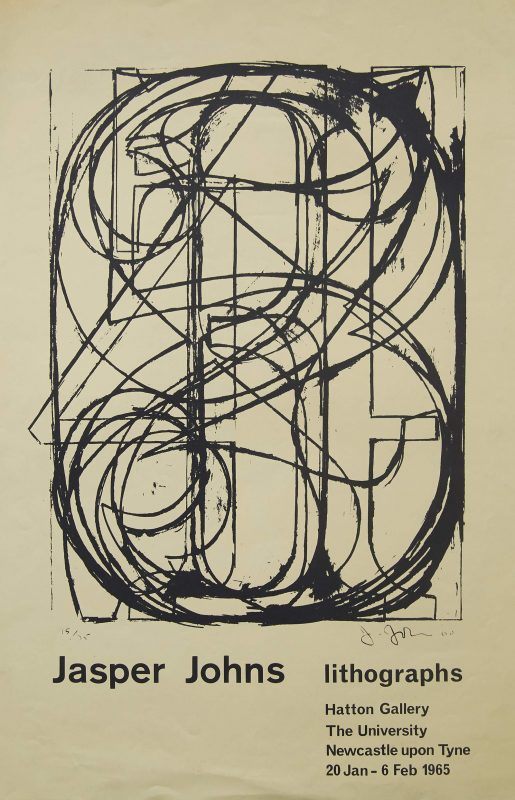1965
With Kenneth Rowntree suceeding Gowing as Professor and following Pasmore’s departure in 1961, this decade saw the increasing influence of Richard Hamilton in teaching, more emphasis on British 20th century acquisitions and younger contemporary artists’ exhibitions.
While Evetts, McCheyne, Holland and Hodgson remained on the staff, others such as Geoffrey Dudley, Eric Dobson, Derwent Wise and later Ian Stephenson took prominent roles.
Exhibitions
-
Jasper Johns Lithographs
20 January - 6 February 1965Jasper Johns Lithographs
-
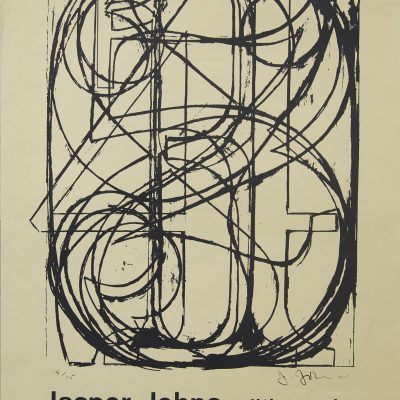
Poster for Jasper Johns exhibition
-
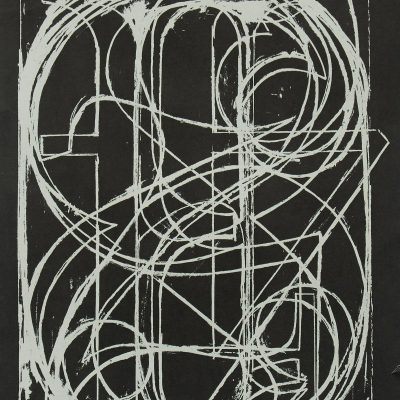
Information leaflet for Johns exhibition
-
-
Eduardo Paolozzi. Recent Sculpture, Drawings and Collage
8 February - 6 March 1965Eduardo Paolozzi. Recent Sculpture, Drawings and Collage
-
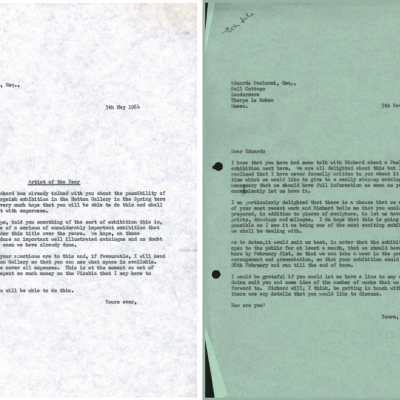
Two letters from Rowntree to Paolozzi
-
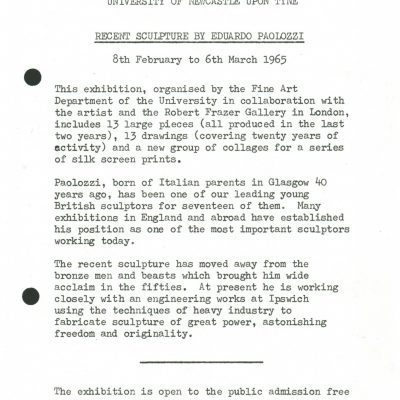
Paolozzi press release
-
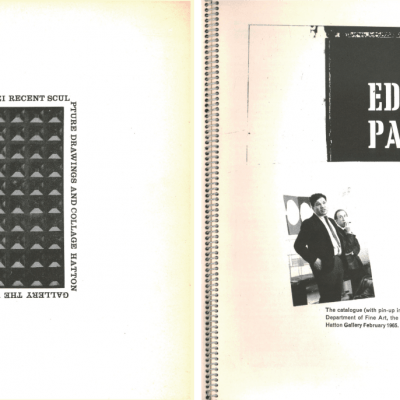
Paolozzi exhibition catalogue
-
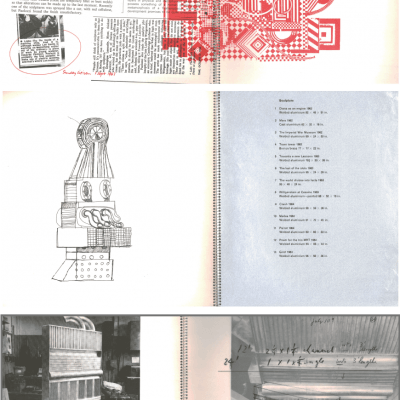
Paolozzi exhibition catalogue spreads
-
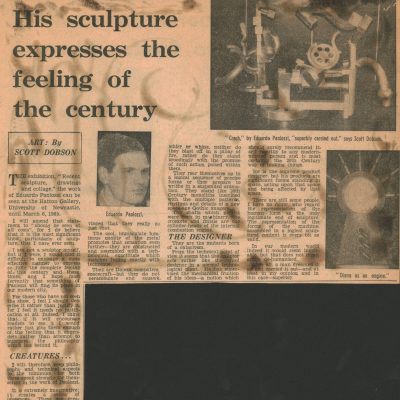
Paolozzi exhibition review
-
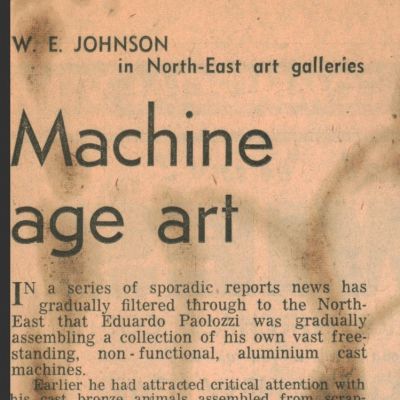
W.E. Johnson’s review in the Northern Echo
-
-
Private View
18 March - 2 April 1965
-
18th Century Venetian Drawings from the Correr Museum, Venice
22 May - 12 June 196518th Century Venetian Drawings from the Correr Museum, Venice
-
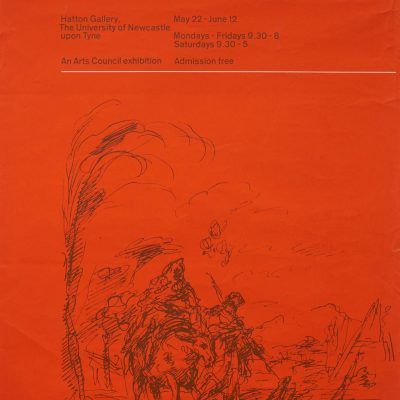
Venetian Drawings exhibition poster
-
-
English Drawings and Etchings
22 May - 12 June 1965English Drawings and Etchings
-
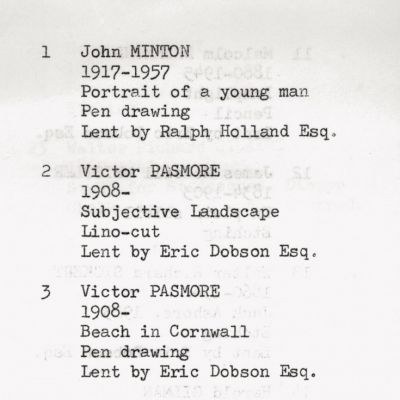
Simple typed exhibition handlist
-
-
Robert Medley Drawings
25 November 1965 - 22 January 1966Robert Medley Drawings
-
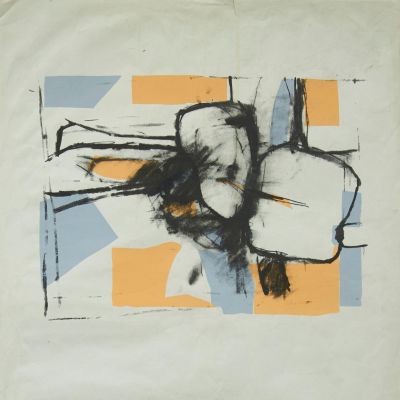
Poster for the Robert Medley Drawings exhibition
-
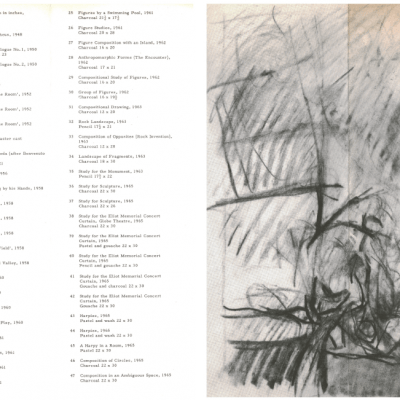
Robert Medley fold out leaflet
-
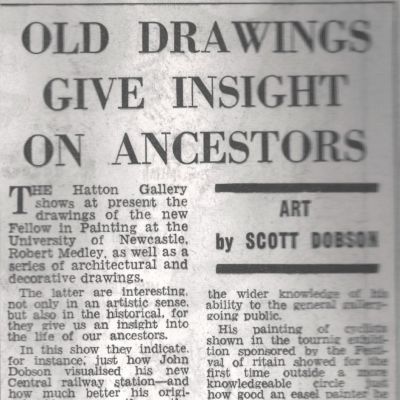
Robert Medley press review
-
-
Architectural and Decorative Drawings
25 November 1965 - 22 January 1966Architectural and Decorative Drawings
-
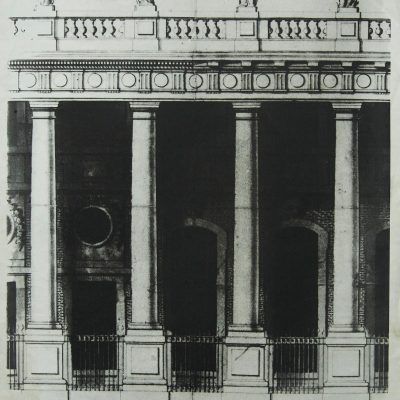
Poster for Architectural and Decorative Drawings
-
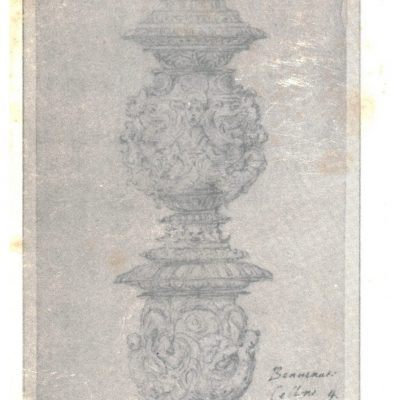
Narrow format catalogue
-
Staff / Students
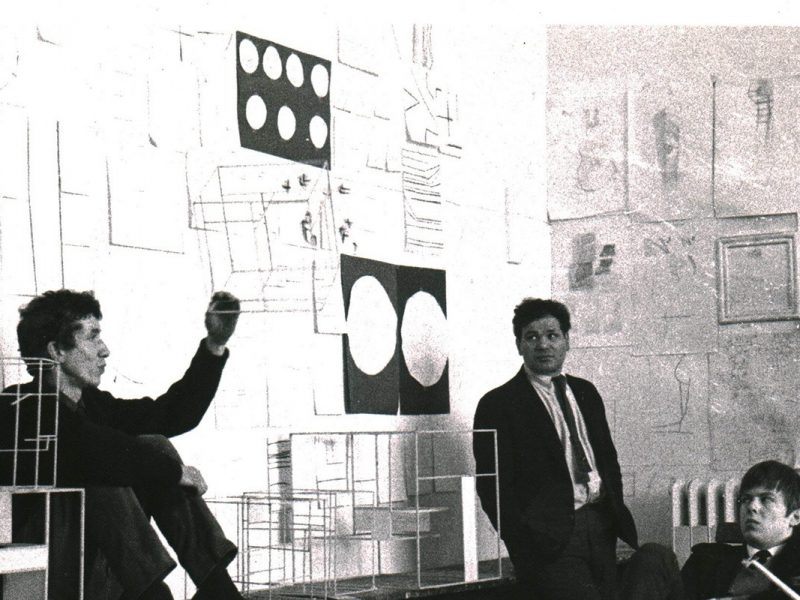
1965, Eduardo Paolozzi, studio photograph
In 1965, Eduardo Paolozzi, as well as having a major exhibition in the Hatton Gallery, was also a visiting tutor in the Fine Art Department. Like Richard Smith in 1963, he can be seen working across mediums, apparently giving hands on, practical instruction in the sculpture studio and involved in a discussion with painting lecturer Matt Rugg.
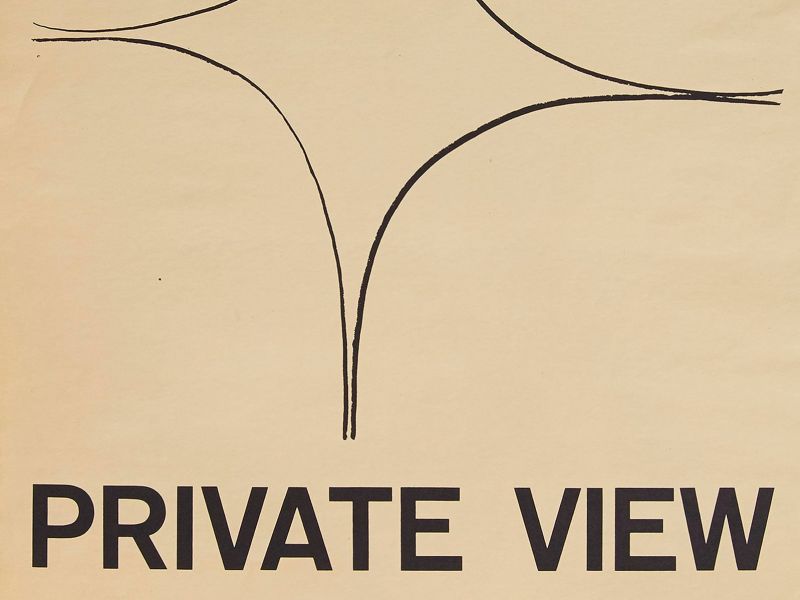
1965, Private View, poster
In 1964 Professor Rowntree had introduced a new student exhibition called ‘Private View’ in the Feb-April period. Replacing a regular ‘Work in Progress’ exhibition, the new innovation was that it would be selected by a different art world figure each year, in the opening year this had been the Department’s Art Historian, Ralph Holland. In 1965 the exhibition was selected by artist Terry Frost, who had been an artist-in-residence in the Fine Art Department in 1964 and may well have designed the poster himself.
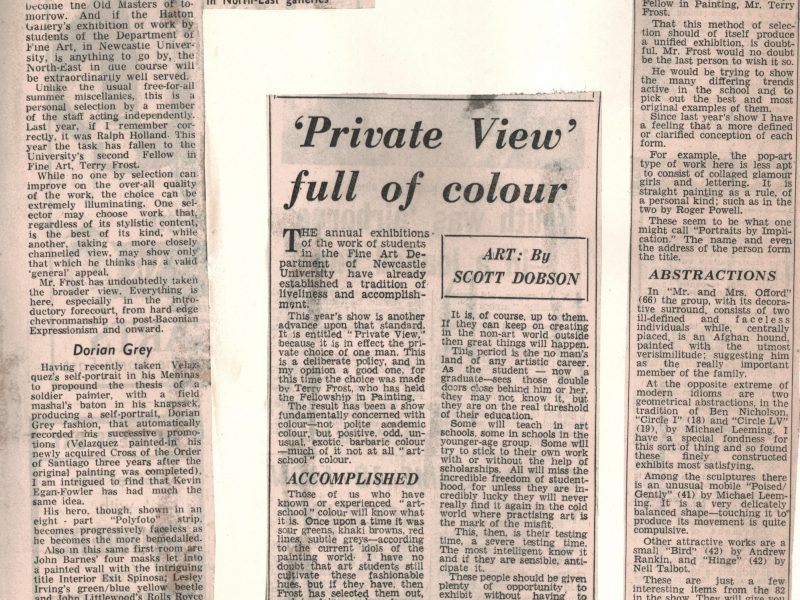
1965, Private View, press review
The Terry Frost selected ‘Private View’ exhibition warranted reviews from three of the North East’s leading critics, for W.E.Johnson the exhibition had everything from ‘hard-edged chrevronmanship to post-Baconian Expressionism and onward.’ Scott Dobson thought ‘the work shown is of quite an amazing standard of accomplishment both on the technical and creative side’, so much so that he didn’t want to single out anyone for special mention.
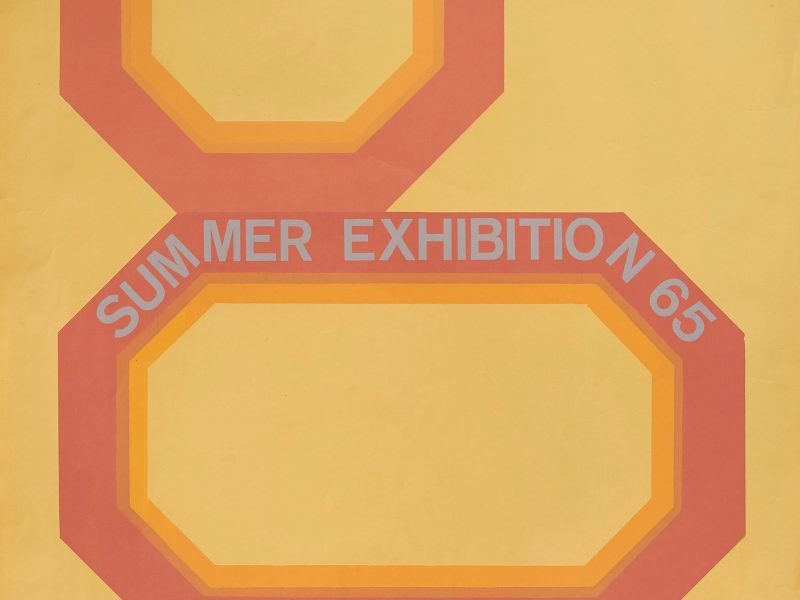
1965, Summer Exhibition, poster
Through the 1960s the posters and catalogues for student exhibitions begin to look less like exercises from Pasmore’s ‘basic course’, with external influences from both pop and colour-field abstract art becoming evident.
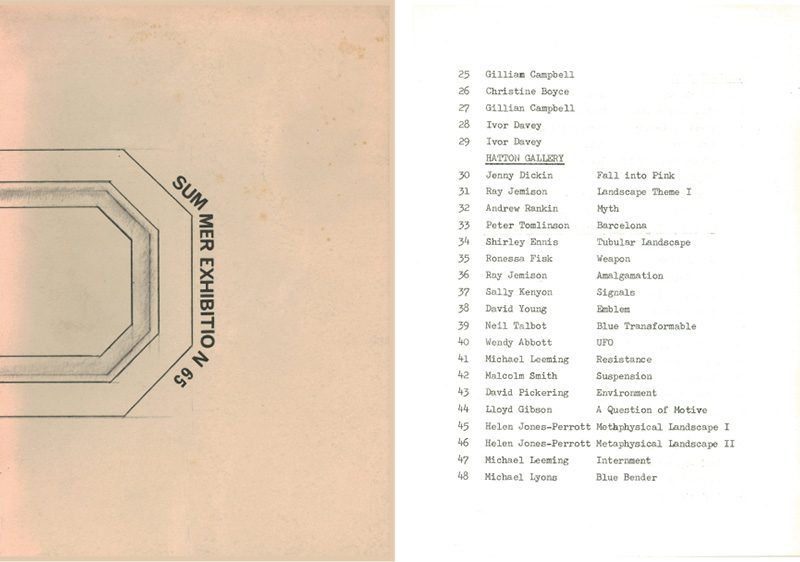
1965, Summer Exhibition, catalogue
The cover catalogue for the 1965 Student Summer Exhibition utilises the same form found in the colour poster, but presented in a very different way.
In 1965 the external examiner was Claude Rogers and the John Bell Simpson student prize winner was Stephen Buckley.
Acquisitions
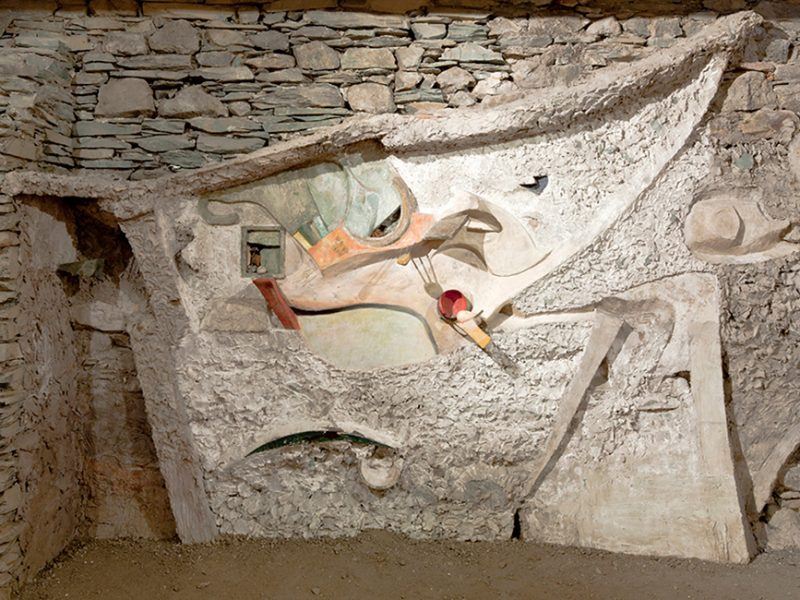
Merz Barn Wall, 1947-48
Kurt Schwitters
Kurt Schwitters (1887-1948) – ‘Merz Barn Wall’ 1947-48.
NEWHG : S0028. Presented by Harry Pierce, with moving costs provided by the V&A Purchase Grant and the Rothley Trust, 1965.
In early 1959 while the Hatton hosted an exhibition of Schwitters’ work, Gowing reported to the Arts Council’s Arts Panel that a ‘building in Ambleside, now rapidly disintegrating, which housed a construction by Schwitters, should, he felt, be preserved.’ This set in train a complex chain of events that led to the Merz Barn Wall being permanently installed in the Gallery.
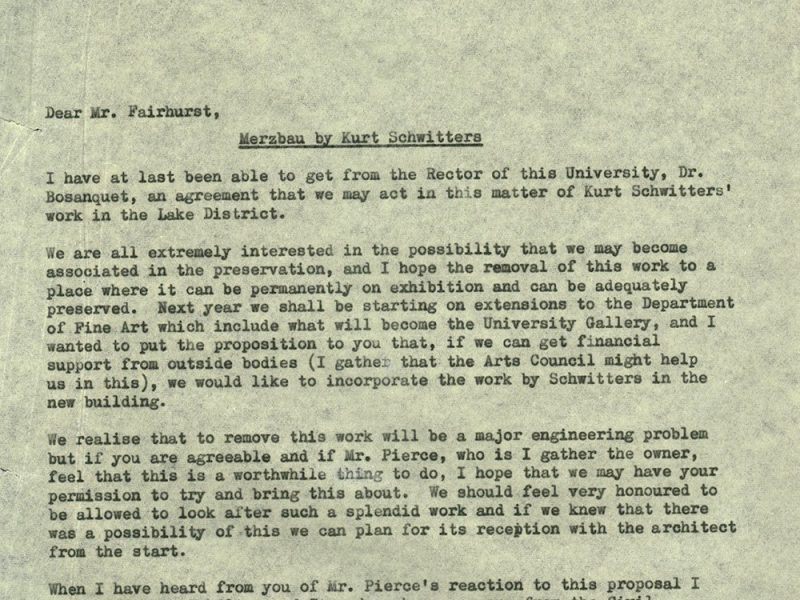
A letter to Harry Fairhurst, 1962
Kenneth Rowntree
As the date of this letter from Rowntree to Harry Fairhurst, Harry Pierce’s son-in-law, indicates, the University were showing interest in the Barn from 1962, Richard Hamilton having first persuaded Rowntree, who in turn convinced the University authorities to get involved. However, after the Tate Gallery declined the offer of a gift in June 1962 nearly three more years of discussions about the Merz Barn’s future followed, involving the University, Abbot Hall in Kendal, Marlborough Gallery in London, the Scottish National Gallery of Modern Art and the Barn’s owner, Harry Pierce.
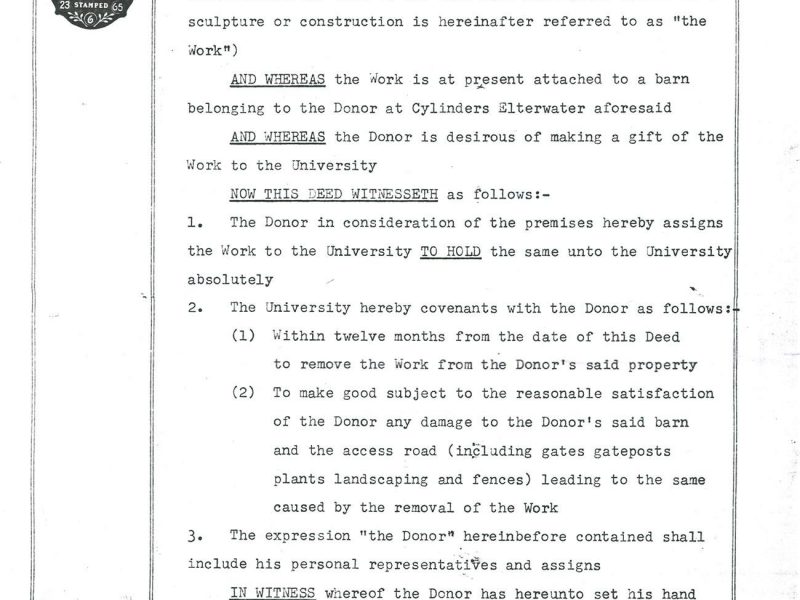
Deed of Gift, 1965
Kurt Schwitters
Harry Pierce finally signed a formal Deed of Gift to the University on 26 March 1965 and Hamilton began coordinating a detailed survey of the Wall before it was moved at the end of September 1965.
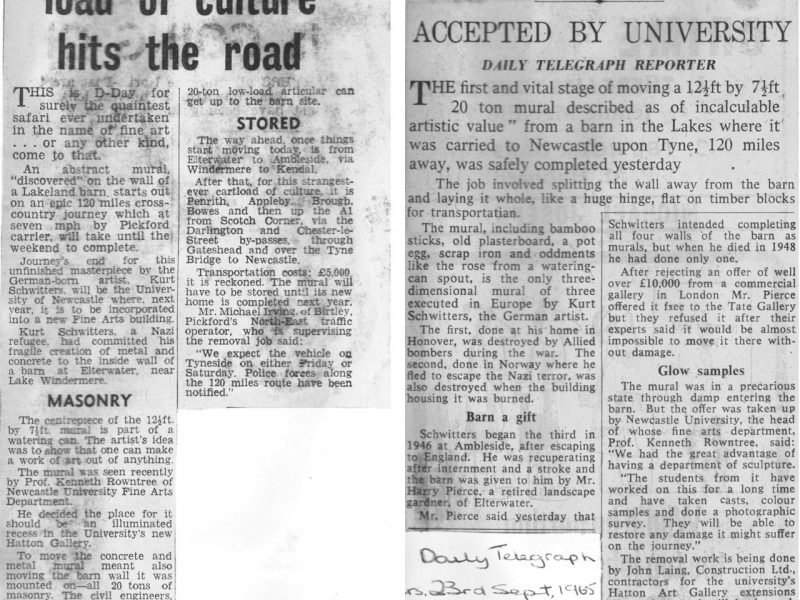
Merz Barn Wall press cuttings, 1965
Kurt Schwitters
Moving the Merz Barn Wall garnered considerable local and national press coverage, of which these are two representative examples.
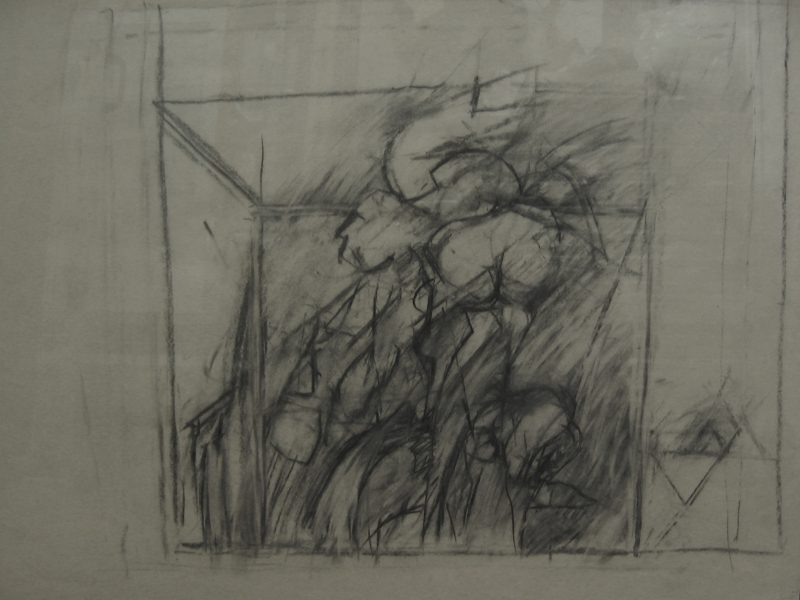
Harpy and Victim, 1960
Robert Medley
Robert Medley (1905-1994) – ‘Harpy and Victim’.
NEWHG : D.0041. Drawing on paper purchased from the artist, 1965.
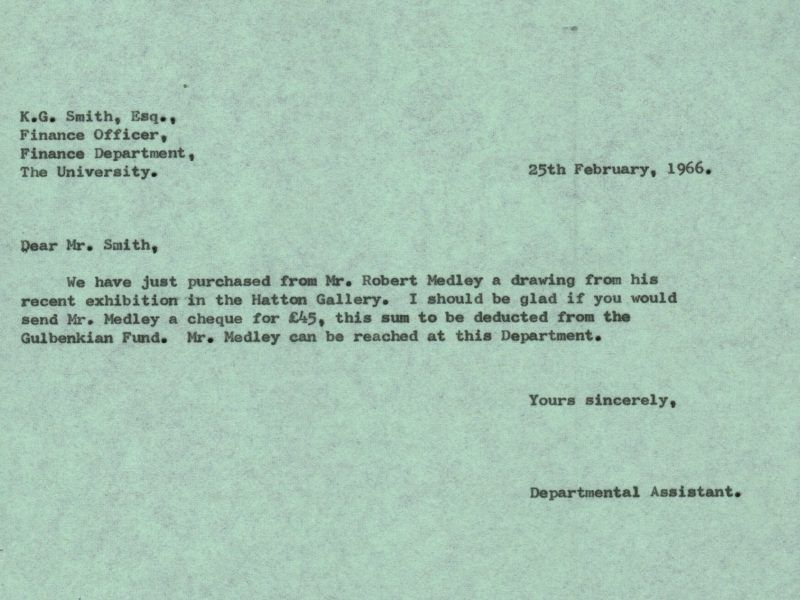
University memo, 1965
Robert Medley
The purchase of this Robert Medley drawing from the exhibition at the Hatton, also coincided with his year-long tenure as Fellow in Painting in the Fine Art Department.
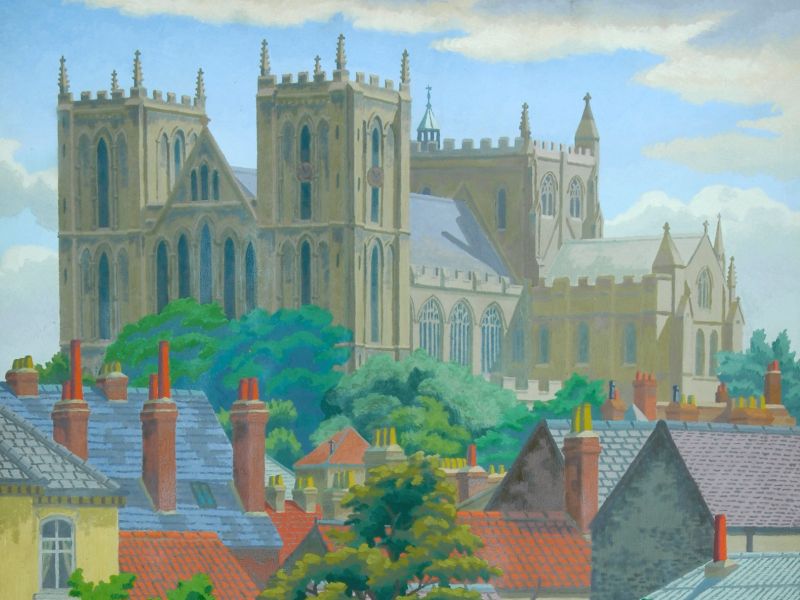
Ripon Cathedral, 1933
Charles Ginner
Charles Ginner (1878-1952) - 'Ripon Cathedral' 1933.
NEWHG : OP.0058. Oil on canvas purchased from Miller's Saleroom, Newcastle, 1965.
This painting was originally commissioned from Ginner by the London & North Eastern Railway (LNER) for a poster promoting rail travel to the ancient cathedral city of Ripon in Yorkshire (‘Its quicker by rail’). The painting turned up in a Newcastle auction room, apparently having once belonged to the local newspaper The Chronicle.
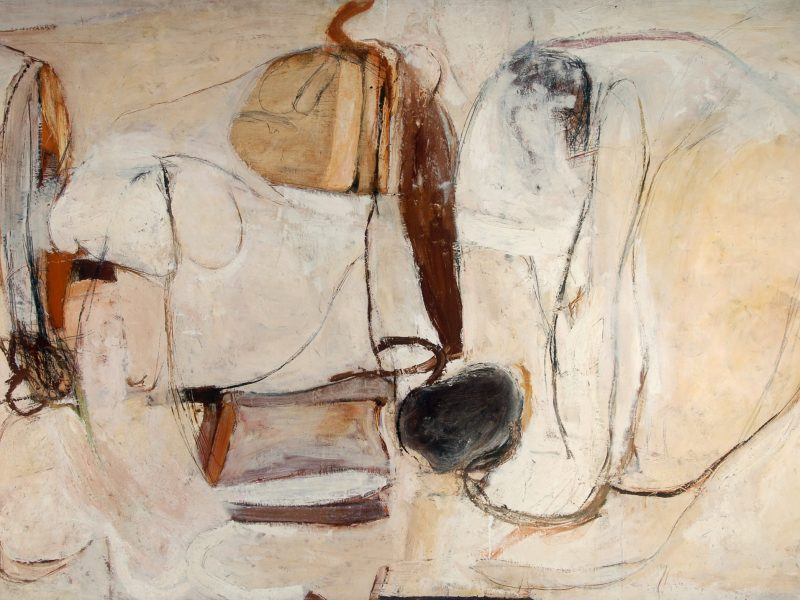
Untitled White Painting, 1960
Brett Whiteley
Brett Whiteley (1939-1992) - 'Untitled White Painting' 1960.
NEWHG : OP.0083. Oil on canvas presented by the Contemporary Art Society, 1965.
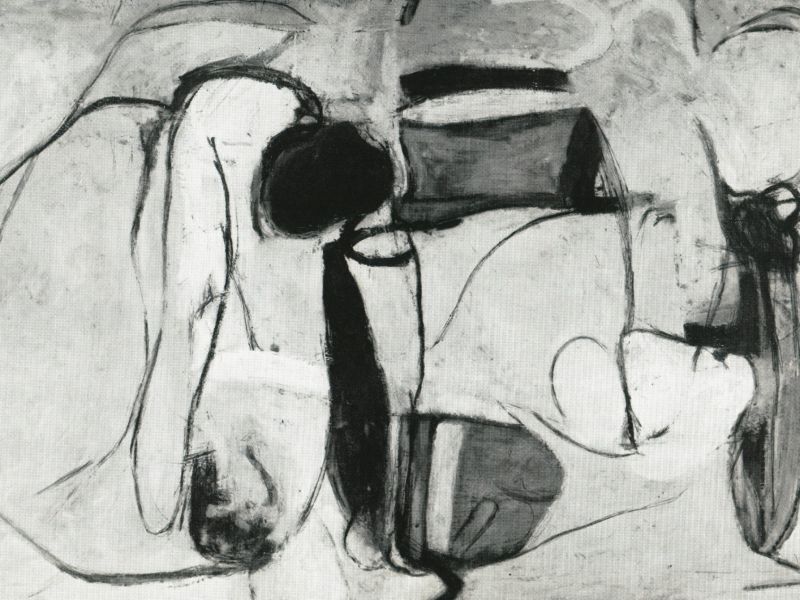
Contemporary Art Society Annual Report, 1961
Brett Whiteley
Like the Tate, the Contemporary Art Society acquired a Brett Whiteley painting from the Recent Australian Painting exhibition at the Whitechapel Art Gallery in 1961, which they then reproduced (upside down!) as the frontispiece for their 1961 Annual Report, it was few years later that it was eventually allocated to the Hatton. Whiteley spent time in Britain and Europe in the early 1960s before returning to Australia, where he became widely acclaimed for his figurative paintings.
